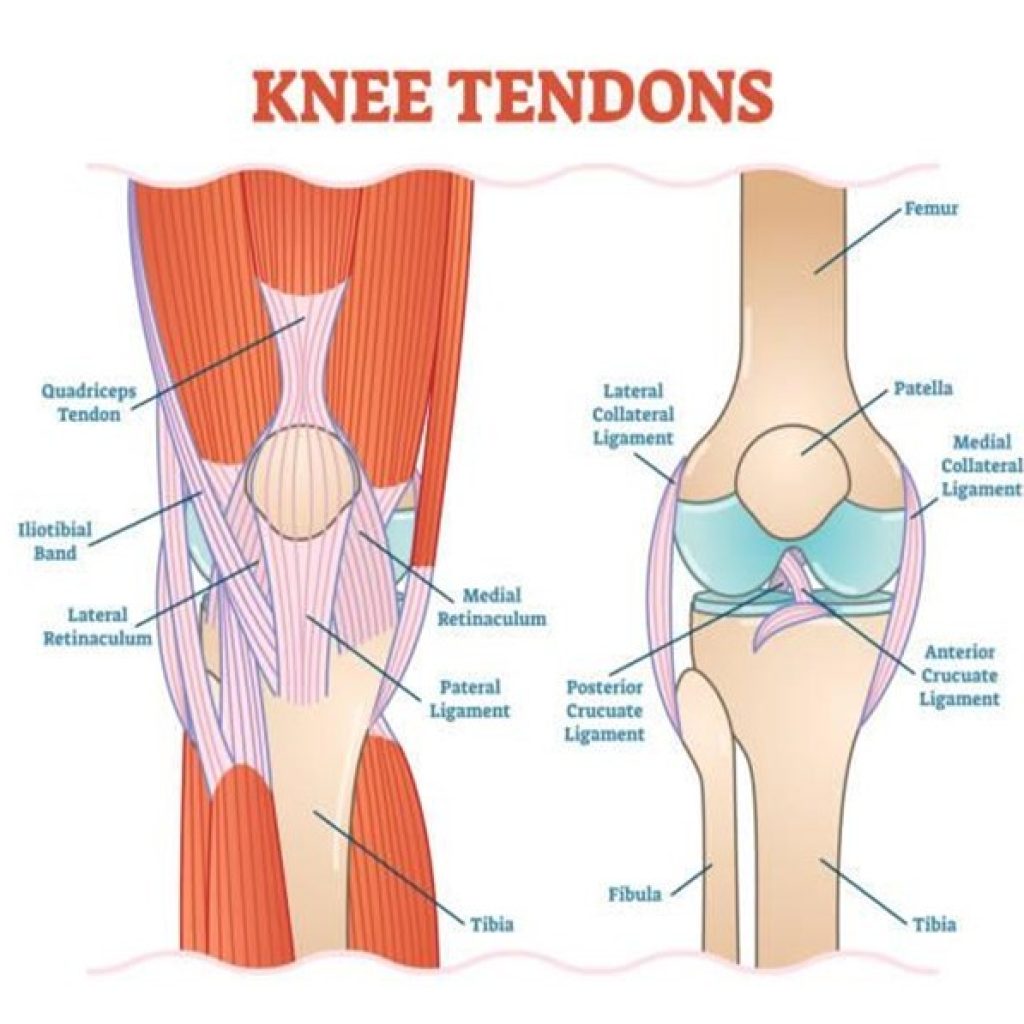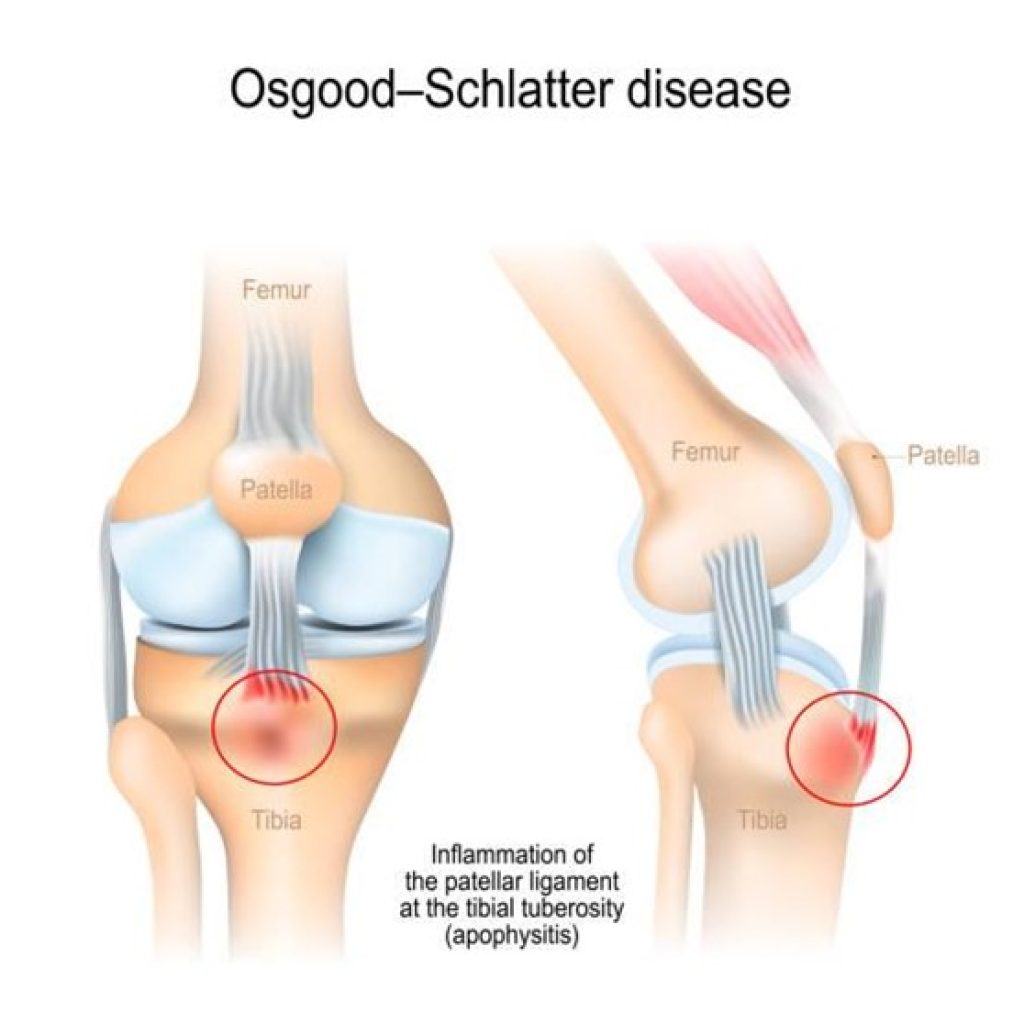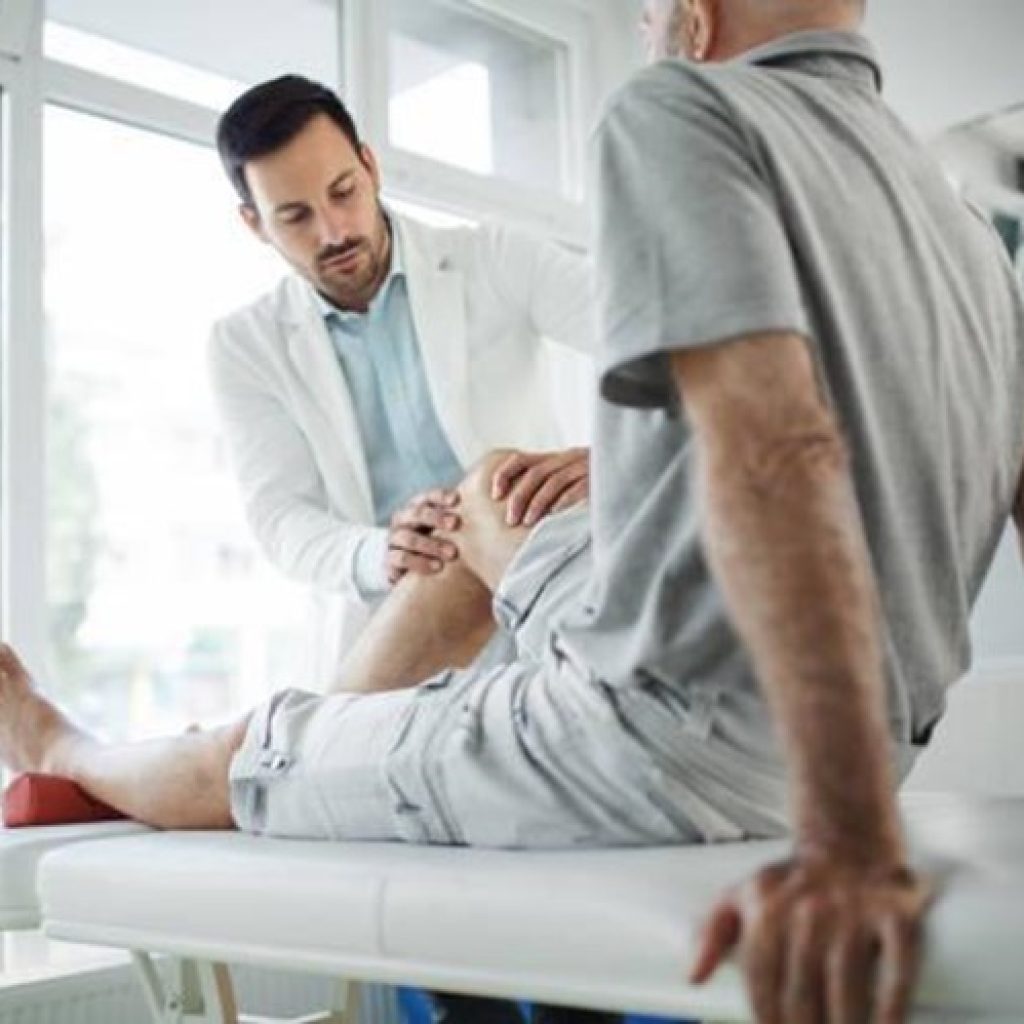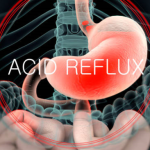Knee Pain: Causes and Solutions
The knee is the biggest joint in the body. It helps us to stand, move, and balance. It has 2 meniscus, several ligaments, and muscles that link to the hip, pelvic area, ankle, and foot.

Many people suffer from knee pain. The prevalence and incidence of knee pain varies among all individuals. The majority of the issues are caused by sports, recreational activities, work-related tasks, or home projects. Please see your physician for diagnosis of your knee pain.
What Conditions Can Cause Knee Pain?
Some conditions that can lead to knee pain include:
- Degeneration process: affecting the bones and meniscus
- Sprain and direct trauma: meniscus tear or ligament tear
- Fracture
- Tendinitis: inflammation of the tendons
- Bursitis: inflammation of the bursa. The bursa is a small sac of fluid that works as a cushion to decrease friction between skin and bone or tendon and bone.
- Osgood Schlatter disease: a type of “growing pain” – it is one of the most common causes of knee pain in children. All genders can be affected, identically. The pain is located below the patella. The area can also be presented with swelling and tender palpation.
- Chondromalacia Patella: is cartilage damage caused by overuse of the knees. It is common for runners and other athletes. It is also a type of degeneration process that affects bone and meniscus. It can also be called Patellofemoral Syndrome.
- Iliotibial Band Syndrome: can cause pain in the lateral aspect of the knee. The Iliotibial band is a fibrous band linking the hip and knee. It can cause knee pain in athletes who do repetitive movements such as cyclists, body builders, and overall people exercising.
- Baker’s cyst: is a collection of fluid that happens in the posterior aspect of the knee. It can appear as a consequence of a trauma, damaged cartilage, or arthritis.

Treatments to Help With Knee Pain
OSTEOPATHY: Uses mostly gentle techniques to gain mobility; decreasing inflammation and pain. Osteopathic Manual Therapists look at the body as a whole. In some cases, knee pain can be a consequence from scarring (C-section + hysterectomy + abdominoplasty/tummy tuck, appendectomy, etc.) Internal fascial tension examples include ovarian cyst, constipation, liver problem, history of kidney stone, etc. However, knee pain can result from foot and ankle problems such as a sprain that happened years ago and is now showing pain in the knee. Instead of considering the knee as the only cause of pain, an Osteopathic Manual Therapist always considers the current and past history of the individual. Therapists observe, finding connections between physical and emotional traumas, as well as surgeries and organ issues in a time frame perspective.
Conservative solutions for knee pain include anti-inflammatories or pain killers, being a short-term solution. Other methods of treatment include physiotherapy, working on strengthening the knee musculature. Massage techniques including cupping, deep tissue, and fascial release can relax muscles and fascia and decrease tension surrounding the knee. Finally, acupuncture can target trigger points in nearby muscles to decrease inflammation and increase blood flow, alleviating the natural flow of energy through the body. All methods of treatment listed above are important to prevent further pain and degeneration.

If you underwent a surgical procedure and your doctor has referred you to a rehabilitation program, you also may be a candidate for Osteopathy. It will assist you in decreasing rehabilitation time and increasing the healing process through the improvement of blood flow, and restoring overall mobility and decreasing the inflammatory process.




